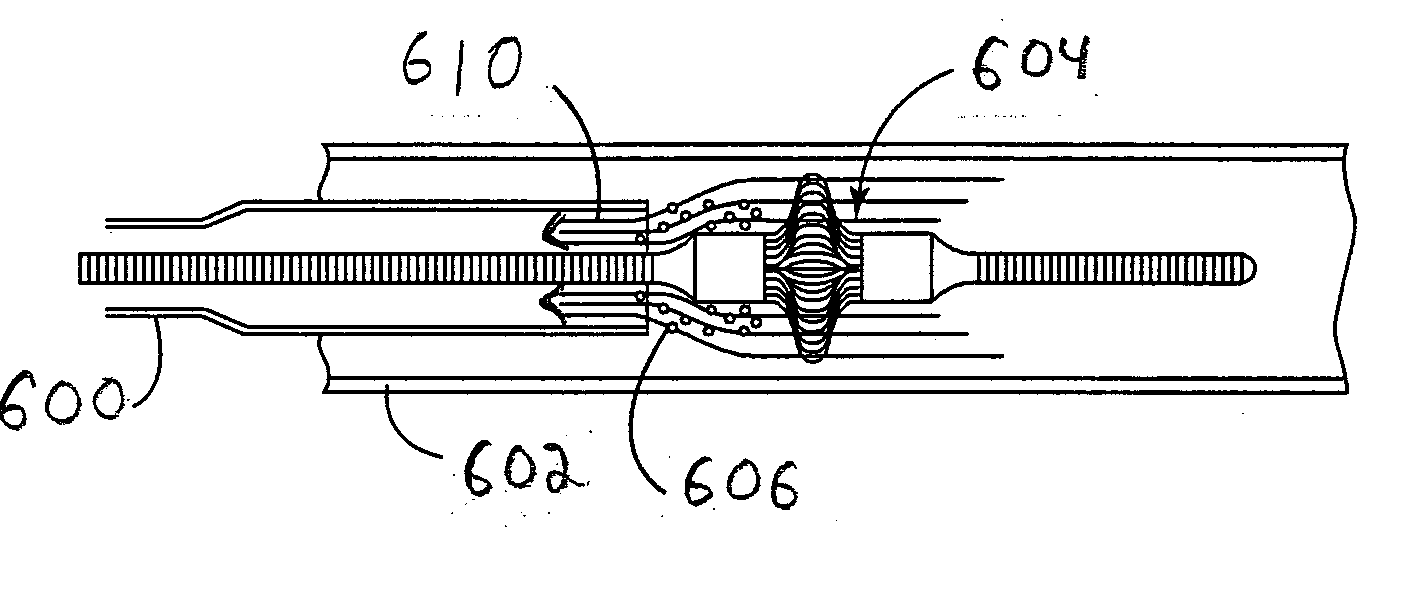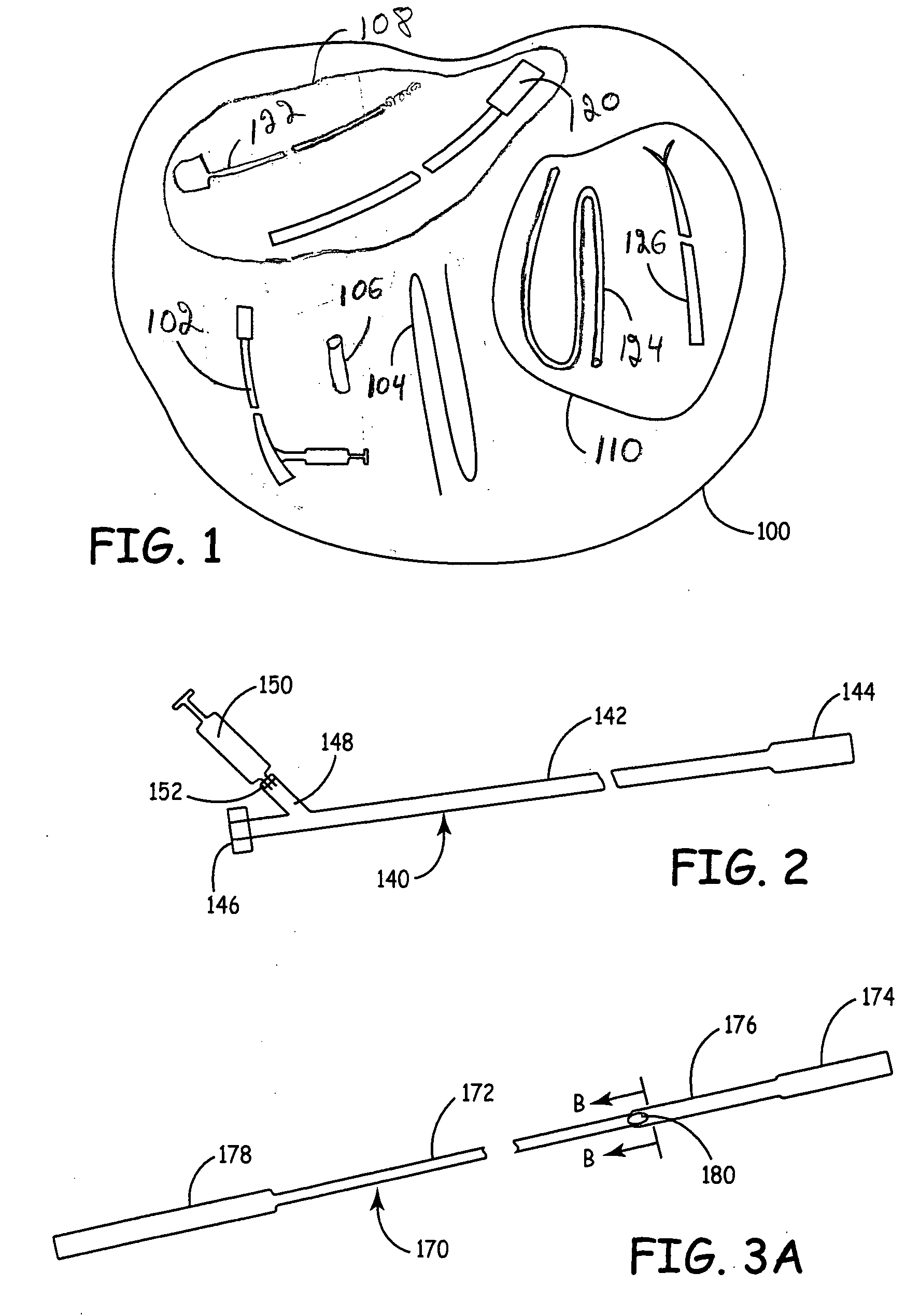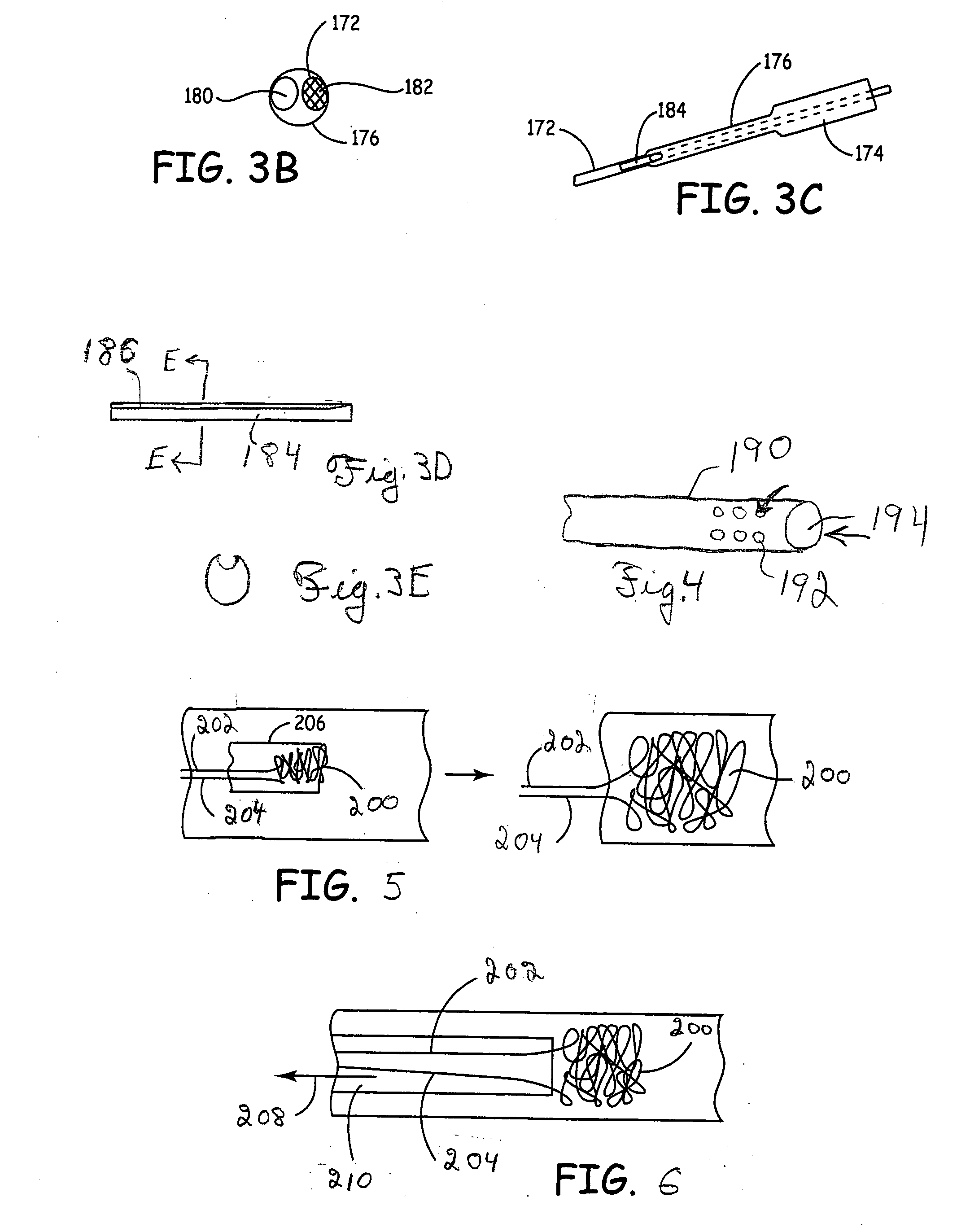Tracking aspiration catheter
- Summary
- Abstract
- Description
- Claims
- Application Information
AI Technical Summary
Benefits of technology
Problems solved by technology
Method used
Image
Examples
third embodiment
[0136] a deflection structure is shown in FIGS. 30-32. In this embodiment, deflection structure 510 comprises a coil 512 and a shaft 514. The coil forms a central channel 516 such that guide structure 464 traverses the central channel 516. During delivery, coil 512 extends from the tip of aspiration catheter 462, as shown in FIG. 30. Thus, coil 512 functions as a bumper. Central channel 516 also constrains the movement of the tip of aspiration catheter 462 relative to guide structure 464 such that the aspiration catheter tracks more faithfully along the guide structure. However, coil 512 does not provide a sufficient aspiration lumen. Therefore, once aspiration lumen 462 is in position or nearly so, it is desirable to remove deflection structure 510 from aspiration catheter 462.
[0137] Coil 512 can be formed, for example, from polymer or stainless steel. Metal can provide desirable levels of tensile strength. Referring to FIG. 31, deflection structure 510 can be pulled back toward th...
fourth embodiment
[0138] a deflection structure is shown in FIGS. 33 and 34. In this embodiment, deflection structure 530 comprises an elastic loop 532 and a tether534. Elastic loop 532 tends to keep its natural shape shown in FIG. 34. During deployment of aspiration catheter 462, elastic loop 534 extends from the tip of the catheter as shown in FIG. 33 and is under tension due to compression to fit within the aspiration catheter. Tension in loop 534 tends to hold deflection structure 530 in place during the delivery of aspiration catheter 462. Loop 534 can be formed, for example, from a spring metal, such as Elgiloy®, a cobalt-chromium-nickel alloy or MP35N, a nickel-cobalt-chromium-molybdenum alloy. Tether 534 can be formed from any reasonable biocompatible material.
[0139] While deflection structure 530 generally may not interfere significant with suction, deflection structure 530 can interfere with withdrawing embolism protection device 466 into aspiration catheter 462. Therefore, once aspiration ...
fifth embodiment
[0140] a deflection structure is shown in FIG. 35. In this embodiment, deflection structure 540 has a prolapsed deflection tip 542 extending from a tether 544. Prolapsed deflection tip 542 is similar to loop 532 in the embodiment in FIGS. 33 and 34. During delivery of aspiration catheter 462, the bend of prolapsed deflection tip 542 extends from the tip of the catheter to function as a bumper. Prolapsed deflection tip 542 may or may not be resilient. Prolapsed deflection tip 542 can be withdrawn partially within or fully from aspiration catheter 462 by pulling on tether 544 to remove obstruction of the catheter opening such that embolism protection device 466 can be withdrawn into the aspiration catheter. Deflection tip 542 and tether 544 may or may not be formed from the same material, such as suitable biocompatible metal(s) and / or polymer(s).
PUM
 Login to View More
Login to View More Abstract
Description
Claims
Application Information
 Login to View More
Login to View More - R&D
- Intellectual Property
- Life Sciences
- Materials
- Tech Scout
- Unparalleled Data Quality
- Higher Quality Content
- 60% Fewer Hallucinations
Browse by: Latest US Patents, China's latest patents, Technical Efficacy Thesaurus, Application Domain, Technology Topic, Popular Technical Reports.
© 2025 PatSnap. All rights reserved.Legal|Privacy policy|Modern Slavery Act Transparency Statement|Sitemap|About US| Contact US: help@patsnap.com



